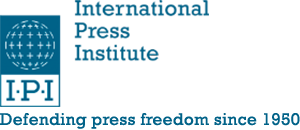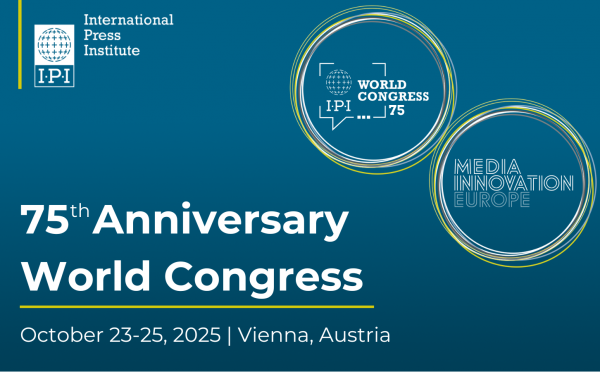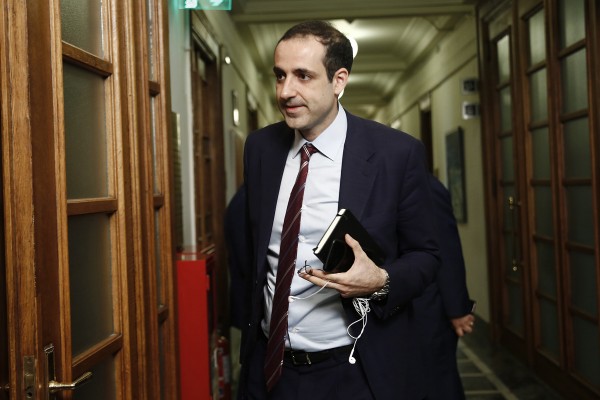Last Wednesday, news outlets around the world reported the latest terrorist attack on a European city that has so far cost five people their lives. Exactly one year earlier, a terrorist attack in Brussels killed 32 people.
Terrorist groups receive extensive media attention. In recent years, terrorists have increasingly sought to use the media to spread their message, create fear and recruit followers.
With the growing threat that extremist terrorism poses around the world, how can media organisations cover terrorism without being used as a mouthpiece for terrorist propaganda? The International Press Institute (IPI) will address the role of news media in covering international terrorism at the 2017 IPI World Congress in Hamburg, Germany this May.
Just after news broke of Wednesday’s attack in London, IPI spoke to Elmar Theveßen, deputy editor-in-chief of German public service broadcaster ZDF. Theveßen has covered security issues and terrorist networks domestically and as a foreign correspondent and has gained a reputation as a prominent expert on terrorism.
IPI: To what extent do terrorists rely on news media to spread their message?
Theveßen: Basically, the terrorists’ purpose is to put psychological pressure on the public, the government, or an institution and they rely on the media, on social media, the web and so on to spread the pictures of horror. We are actually reluctant about what we do show and what we don’t show, but even if we don’t, it will be spread through social media and the internet.
It is very important that media know they are being misused as a tool for terrorism, which means that they really have to put the information and pictures into perspective and give background information.
IPI: How can we balance informing the public and running the risk of being exploited as a propaganda tool?
Theveßen: Our colleagues from CNN coined the phrase “Be first, but first be right”.
We have to be fast in reporting but we have to be really careful what we report. We have to check not only the information but also the pictures, and also choose from an ethical point of view. At ZDF, being a public service broadcaster, we discuss for each individual incident whether a picture is ethically okay to be distributed. For instance, if there are pictures of a terrorist attack, we ensure victims cannot be recognised, we don’t show big pools of blood, we don’t show hostages being killed…
It is our duty as journalists to show reality as it is but, for example, in a hostage situation, I think it is enough to show a photograph, we don’t have to show a propaganda video that has been prepared by the Islamic State.
IPI: How do German media differ in this from media in other countries?
Theveßen: In Germany, the media, specifically public broadcasters, are very reluctant and very cautious because of ethical rules and we have legal rules in Germany that restrict what we can actually show.
In the Anglo-Saxon region, there seem to be fewer limits as to what can be shown. In many of those countries, the public’s right to information comes even before human dignity and that is not the case in Germany – human dignity is supreme in Germany.
And then there are countries where media may decide to show everything and that might have something to do with cultural differences. If you live in a region where life and death and terror and war have become a part of daily life for people, showing terror, showing carnage is the natural thing.
IPI: The media is often accused of treating Islamic terrorism differently than other terrorist acts, thereby contributing to Islamophobia and xenophobia. How do you prevent these tendencies in your own coverage?
Theveßen: The most important thing is to differentiate of course. And you only can do that when you report. When you don’t report all the facts then you might be accused of withholding information, so we have to be reporting on whatever we know. And if there is an Islamist background, we point that out; if there is an extremist right-wing background, we point it out.
And there is also a huge difference between Islam and Islamism. In my view as an analyst on these issues, Islamism is a misuse and abuse of Islam and we have to make to make it clear in our coverage that if we speak of an Islamist perpetrator, it is not a Muslim.
IPI: Why do you think it is important to address how we cover terrorism in the media at IPI’s 2017 World Congress in Hamburg?
Theveßen: It is very important to discuss it, to exchange views and maybe come up with some kind of guidelines. I don’t think that we will have a legal framework internationally, but it would be nice to have an agreement on the basics of journalistic conduct – although there should not be sanctions for violating it.
Because what we see now is that we will see more terror in the news where the language matters, the selection of videos and images matter.
And we have to explain why we are showing something or why we are not showing something. In times like these, if we don’t explain our decisions , for example for ethical or legal reasons, then people might accuse us of withholding the truth, of withholding reality from the public. We really have to make transparent why we choose to report what we report and why we choose not to report for example certain images.
Theveßen will participate in the panel “Terrorism & News Media: Publishing News, Publicizing Terrorism” on Friday, May 19 at 11 a.m. as part of IPI’s 2017 World Congress from May 18 to 20 in Hamburg, Germany.



